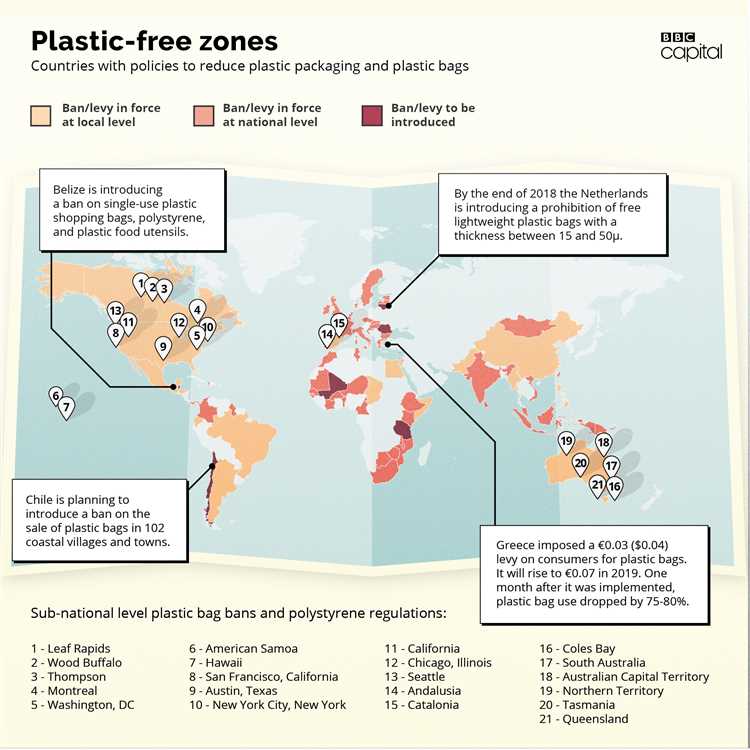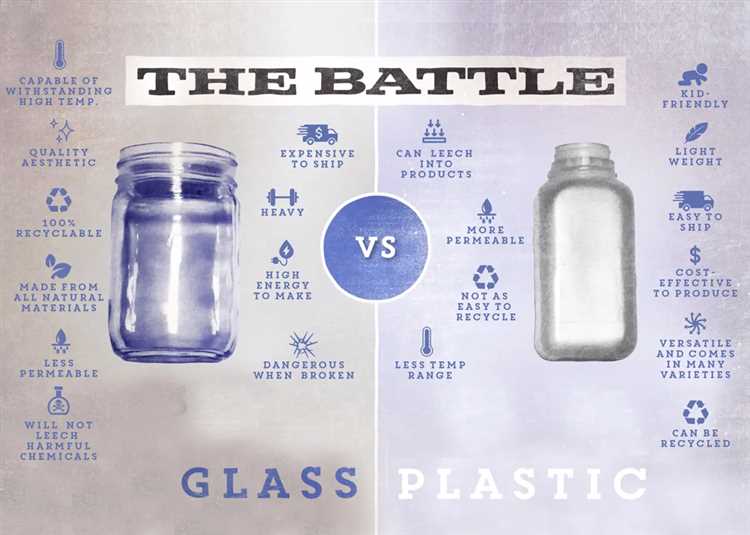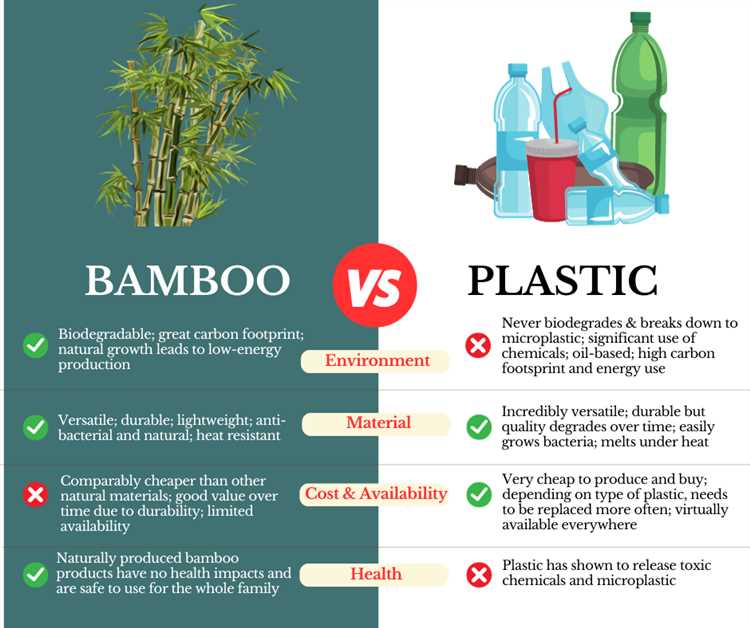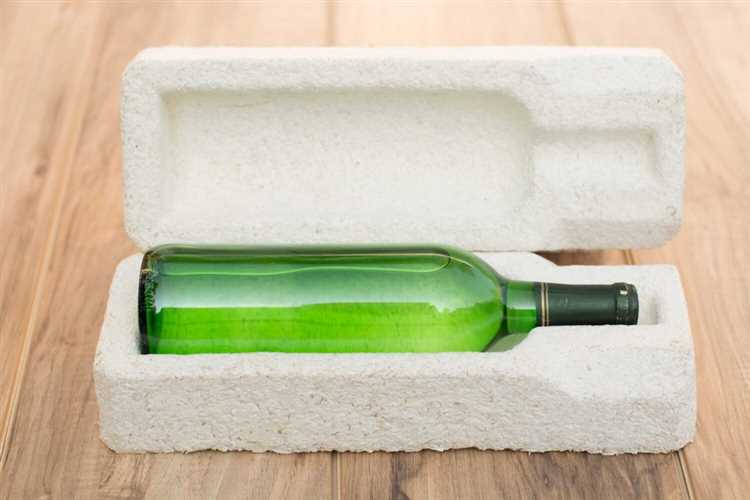
Welcome to our comprehensive guide on cost-effective alternatives to plastic! In recent years, the global concern over plastic pollution and its lasting impact on the environment has increased significantly. Plastic is not only harmful to wildlife and marine ecosystems, but it also poses a threat to human health. Fortunately, there are a wide range of sustainable and affordable alternatives available that can help us reduce our dependence on plastic and make a positive impact on the planet.
One of the most popular alternatives to plastic is glass. Glass is a versatile material that is both reusable and easily recyclable. It is an excellent option for packaging food and beverages, as it does not release harmful chemicals into the products it contains. Glass containers also have the advantage of being transparent, allowing consumers to see the contents at a glance, which helps with the overall presentation and marketing of the product.
Another cost-effective alternative to plastic is metal. Metal is durable and has a long lifespan, making it ideal for products that require longevity. Metal containers, such as aluminum cans and stainless steel bottles, are widely used for packaging beverages. They can be easily recycled and have a high scrap value, making them an environmentally-friendly choice. Additionally, metal is resistant to leaks and odors, ensuring that the contents of the container stay fresh for a longer period of time.
When it comes to shopping bags, reusable fabric bags are a great alternative to plastic. Fabric bags can be made from various materials, such as cotton, canvas, or jute, and are much sturdier than their plastic counterparts. They can be used over and over again, reducing the amount of waste generated from single-use plastic bags. Fabric bags are not only better for the environment, but they are also more comfortable to carry, as they typically have longer handles and do not dig into the hands when filled with heavy items.
- Sustainable Packaging Solutions
- 1. Biodegradable Packaging
- 2. Compostable Packaging
- 3. Recyclable Packaging
- 4. Reusable Packaging
- Eco-friendly Utensils and Cutlery
- Bamboo Utensils
- Stainless Steel Cutlery
- Wooden Utensils
- Natural Fiber Textiles for Everyday Use
- Cotton
- Linen
- Biodegradable Cleaning Products
- What are Biodegradable Cleaning Products?
- Benefits of Biodegradable Cleaning Products
- Environmentally Friendly Building Materials
- Green Energy Sources: Renewable and Affordable
- Solar Power
- Wind Power
- Q&A:
- What are some cost-effective alternatives to plastic?
- Is bamboo a good alternative to plastic?
- Are there any cost-effective alternatives to plastic bags?
- Why is reducing plastic waste important?
- Can paper be a sustainable alternative to plastic?
- What are some cost-effective alternatives to plastic?
Sustainable Packaging Solutions
Sustainable packaging solutions are becoming increasingly important as individuals and businesses strive to reduce their environmental impact. Traditional packaging materials, such as plastic, have been found to have a detrimental effect on the environment, leading to pollution and waste. Fortunately, there are several cost-effective and eco-friendly alternatives available.
1. Biodegradable Packaging
One popular option is biodegradable packaging made from materials such as plant fibers, starch, or paper. These materials are designed to break down naturally over time, reducing the amount of waste that ends up in landfills. Biodegradable packaging is an excellent choice for products that have a short shelf life or are intended for single-use.
2. Compostable Packaging
Compostable packaging goes one step further than biodegradable packaging. It is designed to not only break down but also provide nutrients to the soil as it decomposes. Made from organic materials like cornstarch or bamboo, compostable packaging is an ideal choice for sustainable businesses and individuals who prioritize eco-friendly practices.
Important note: When using compostable packaging, it is crucial to dispose of it properly in composting facilities to ensure it breaks down correctly.
3. Recyclable Packaging
Recyclable packaging is another effective sustainable solution. By using materials like cardboard, glass, or aluminum, recyclable packaging can be processed and reused multiple times, reducing the demand for new materials. Recycling packaging not only helps reduce waste but also conserves energy and resources.
Top tip: When using recyclable packaging, remember to communicate and educate consumers about proper recycling practices to ensure the package ends up in the recycling stream.
4. Reusable Packaging
Reusable packaging is gaining popularity as it provides a sustainable alternative to disposable packaging. This type of packaging is designed to be used multiple times, significantly reducing the amount of waste generated. Reusable packaging can be made from materials like stainless steel, silicone, or cloth and is an excellent option for products that require protection during transit.
Remember: Reusable packaging is only effective if consumers return it to be reused, so consider implementing a return or deposit system to incentivize customers.
Overall, sustainable packaging solutions offer a wide range of benefits, including reducing waste, minimizing environmental impact, and improving brand reputation. By adopting these alternatives, businesses and individuals can make a significant contribution towards a more sustainable future.
Eco-friendly Utensils and Cutlery
Plastic utensils and cutlery are widely used but contribute to environmental pollution and waste. Fortunately, there are many eco-friendly alternatives available that can help reduce our reliance on plastic and protect the environment.
Bamboo Utensils
Bamboo is a rapidly renewable resource that is known for its strength and durability. Bamboo utensils are a popular choice for those looking for eco-friendly alternatives. They are lightweight, easy to clean, and have a natural antimicrobial property. Bamboo utensils can be reused and composted, making them a sustainable option.
Stainless Steel Cutlery

Stainless steel is a durable and long-lasting material that can be used for cutlery. It is resistant to corrosion, easy to clean, and can withstand high temperatures. Stainless steel cutlery can be reused for years, reducing the need for disposable plastic cutlery.
Many companies offer stainless steel cutlery sets that come with a carrying case, making them convenient for traveling or picnics.
Wooden Utensils
Wooden utensils are another eco-friendly alternative to plastic. They are biodegradable, renewable, and have a natural texture and warmth. Wooden utensils are suitable for a variety of purposes, including cooking, serving, and eating. They can be washed and reused multiple times before eventually composting them.
It’s important to choose wooden utensils made from sustainable sources to ensure they are ethically produced and do not contribute to deforestation.
By opting for eco-friendly utensils and cutlery, you can reduce your plastic waste and make a positive impact on the environment. Whether you choose bamboo, stainless steel, or wooden utensils, making the switch is a small step toward a greener future.
Natural Fiber Textiles for Everyday Use
Natural fiber textiles are a sustainable and cost-effective alternative to plastic-based materials. They offer a wide range of benefits, including breathability, durability, and biodegradability. In this section, we will explore some popular natural fiber textiles that can be used in everyday life.
Cotton
Cotton is one of the most widely used natural fibers in the textile industry. It is known for its softness, breathability, and moisture-wicking properties. Cotton fabrics are comfortable to wear and suitable for a variety of everyday clothing items, such as t-shirts, jeans, and underwear. Additionally, cotton is biodegradable, meaning it will break down naturally over time, reducing its environmental impact.
Linen

Linen is a natural fiber made from the flax plant. It is known for its strength, durability, and ability to absorb moisture. Linen fabrics are lightweight and breathable, making them ideal for summer clothing items like dresses, shirts, and bed sheets. Linen also has natural antibacterial properties, which make it a hygienic choice for everyday use.
Did you know? Linen fabric is made from the flax plant, which requires less water and pesticides compared to cotton.
Both cotton and linen can be easily washed and maintained, making them suitable for everyday use. By choosing natural fiber textiles over plastic-based materials, you can reduce your carbon footprint and contribute to a greener and more sustainable future.
Biodegradable Cleaning Products
When it comes to cleaning our homes, offices, or any other space, it is important to be mindful of the environmental impact of the products we use. Traditional cleaning products often contain harmful chemicals and are packaged in single-use plastic bottles, which contribute to pollution and landfill waste. Thankfully, there are now biodegradable cleaning products available that provide effective cleaning without harming the environment.
What are Biodegradable Cleaning Products?
Biodegradable cleaning products are formulated with ingredients that break down and decompose naturally over time, without causing harm to the environment. They are made from renewable resources, such as plant-based or natural ingredients, instead of petrochemicals commonly found in traditional cleaning products. These products are designed to minimize their impact on waterways, soil, and wildlife, and usually come in eco-friendly packaging to reduce waste.
Benefits of Biodegradable Cleaning Products

Using biodegradable cleaning products offers several benefits:
- Reduced environmental impact: Biodegradable products are made from ingredients that are more sustainable and less harmful to the environment. They do not release toxic chemicals or contribute to pollution when they break down.
- Healthier for humans and pets: Traditional cleaning products can contain harsh chemicals that can be harmful when inhaled or come into contact with the skin. Biodegradable products are typically safer for use around people and animals.
- Minimizes plastic waste: Many biodegradable cleaning products come in plastic-free or minimal packaging, which reduces the amount of plastic waste going to landfills or ending up in ecosystems.
- Supports a circular economy: Biodegradable cleaning products are often made from recycled materials or can be recycled themselves. This promotes a circular economy, where waste is minimized and resources are reused.
With the growing awareness around the need for sustainable and environmentally-friendly alternatives, biodegradable cleaning products are becoming more readily available in stores and online. Making the switch to these products is a simple but significant step towards reducing our impact on the environment and creating a more sustainable future.
Environmentally Friendly Building Materials
When it comes to constructing buildings, it’s important to consider the impact on the environment. Fortunately, there are a variety of environmentally friendly building materials available. These materials not only reduce the carbon footprint but also promote sustainability in the construction industry.
Bamboo: Bamboo is a fast-growing and sustainable material that can be used for various purposes in building construction. It is known for its strength and durability, making it an excellent alternative to traditional materials like wood. Bamboo also has natural resistance to pests and requires less maintenance.
Recycled Steel: Using recycled steel in construction can significantly reduce the environmental impact. Steel is one of the most commonly used building materials, and recycling it helps conserve natural resources and reduce energy consumption. Recycled steel is just as durable and strong as virgin steel, making it a reliable option for sustainable building.
Recycled Concrete: As one of the most widely used construction materials in the world, concrete production contributes to carbon emissions. By using recycled concrete, the environmental impact can be minimized. Recycled concrete not only helps conserve natural resources but also reduces the need for landfill space.
Rammed Earth: Rammed earth construction involves compressing a mixture of earth, clay, sand, and gravel within formwork. This traditional building technique is highly sustainable as it utilizes natural materials that are locally available. Rammed earth structures offer excellent thermal performance, durability, and low maintenance requirements.
Hempcrete: Hempcrete is a mixture of hemp fibers and a lime-based binder. It is lightweight, fire-resistant, and non-toxic. Hemp is a fast-growing plant that requires minimal water and pesticides, making it an eco-friendly alternative to traditional insulation materials. Hempcrete also has excellent thermal insulation properties.
Cork: Cork is a renewable material that comes from the bark of cork oak trees. It is harvested without harming the trees, making it a sustainable option for insulation. Cork is also an excellent soundproofing material and has natural resistance to pests, mold, and fire.
Straw Bales: Straw bales are an affordable and environmentally friendly option for building walls. Straw is a byproduct of the agricultural industry and can be used as an insulating material. It is renewable, non-toxic, and has excellent thermal insulation properties. Building with straw bales also helps reduce waste from the farming sector.
Understanding the importance of using environmentally friendly building materials can have a significant impact on reducing the construction industry’s carbon footprint. By choosing sustainable alternatives, we can create a more sustainable and greener future for generations to come.
Green Energy Sources: Renewable and Affordable
One of the most pressing issues of our time is the need to transition to renewable energy sources in order to reduce our carbon footprint and combat climate change. Green energy sources, such as solar and wind power, offer a cost-effective and sustainable solution to our energy needs. In this section, we will explore some of the most popular green energy sources and their advantages.
Solar Power
Solar power is a clean and abundant energy source that harnesses the power of the sun to generate electricity. Solar panels, made up of photovoltaic cells, convert sunlight into usable energy. One of the main advantages of solar power is its affordability. With the decreasing cost of solar panels and the availability of government incentives, installing solar panels on residential and commercial buildings has become more accessible than ever. Additionally, solar power systems require minimal maintenance and can significantly reduce electricity bills over time.
Wind Power
Wind power is another cost-effective green energy source that uses the power of the wind to generate electricity. Wind turbines, which consist of large blades mounted on a tower, convert the kinetic energy of the wind into mechanical power. This power is then used to generate electricity. Wind power is a reliable and renewable energy source that produces zero emissions. It can be harnessed on both small and large scales, making it suitable for both residential and industrial use. Additionally, wind turbines can be installed both onshore and offshore, providing a versatile solution for renewable energy generation.
Other Green Energy Sources:
- Hydroelectric Power: Harnesses the power of water to generate electricity. It is one of the oldest and most widely used renewable energy sources.
- Biomass Energy: Uses organic materials, such as agricultural waste and wood pellets, to produce heat and electricity.
- Geothermal Energy: Utilizes the heat from the earth’s interior to generate electricity and heat buildings.
- Tidal Power: Converts the energy from tides into electricity using turbines.
In conclusion, green energy sources offer a viable alternative to traditional fossil fuel-based energy sources. They are not only renewable and environmentally friendly, but also affordable in the long run. By embracing green energy technologies, we can reduce our reliance on non-renewable resources and create a more sustainable future.
Q&A:
What are some cost-effective alternatives to plastic?
There are several cost-effective alternatives to plastic, including glass, stainless steel, bamboo, and paper. These materials are not only more sustainable but also reusable and recyclable.
Is bamboo a good alternative to plastic?
Yes, bamboo is a great alternative to plastic. It is a renewable resource that grows quickly and requires less water than many other plants. Bamboo products, such as utensils and straws, are durable and can be reused multiple times.
Are there any cost-effective alternatives to plastic bags?
Yes, there are cost-effective alternatives to plastic bags. One option is using reusable cloth bags made of materials like cotton or canvas. These bags are sturdy, washable, and can be used multiple times, making them a more sustainable choice than single-use plastic bags.
Why is reducing plastic waste important?
Reducing plastic waste is important for several reasons. Plastic takes hundreds of years to break down, leading to pollution in our oceans and landfills. It also harms marine life and contributes to greenhouse gas emissions. By finding cost-effective alternatives to plastic, we can reduce waste and lessen our impact on the environment.
Can paper be a sustainable alternative to plastic?
Paper can be a sustainable alternative to plastic, depending on how it is sourced and used. Recycled paper products, like paper bags and cardboard packaging, can help reduce the demand for new materials. However, it is important to consider the environmental impact of paper production, such as deforestation and water consumption.
What are some cost-effective alternatives to plastic?
Some cost-effective alternatives to plastic include reusable cloth bags, glass containers, stainless steel water bottles, and bamboo utensils.